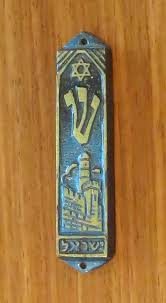23
Precious Metals
by yudaica2013 ·
Metals recognized as one of the oldest and most important discoveries and achievements of humankind. It is believed that initially had been in use only seven metals, namely gold, silver, lead, copper, tin, iron and mercury. Already in the 18th century, to the extent their discoveries to the list of metals added aluminum and platinum. And yet – a lot of metal alloys. What associations do you have in pronouncing the words "precious metals"? This is probably the gold bars, and maybe gold mines … From time immemorial we call gold a precious metal, probably because of its economic value is very high.
And, can we believe gold precious metal because it is, it helps to emphasize the beauty and value delicate faceted stone, giving it some individuality? Can metals called precious, because they are used to make jewelry? Let's try to understand this delicate question. Today, to precious metals are uniquely classified gold, silver and platinum. Also in the category of precious metals, metals include the so-called platinum group – iridium, rhodium, osmium, palladium, ruthenium. So why however, these metals are classified as precious? If we look at history, we find that in ancient Egypt, for example, silver was valued much more expensive yellow metal, and just because the country is not mined. Or aluminum. Not without interest that once the gold price …
inferior to aluminum. It lasted, though not for long. Once people have found a cheap way of production of aluminum, its value dropped significantly. Today Jewelry aluminum products are not very valuable things. But these two examples give us a major clue why some metals are becoming precious. Rarity makes metals more valuable! But not only. The value of any Metal is also in their physical and chemical properties. All metals are numbered among the categories of precious, and have a nice shine and beautiful color. And precious metals respond well to forge, they are often alloyed with other metals. And yet, what makes precious metals, placing them a step above the rest – they are completely or almost completely exposed to any wear or corrosion. But as the precious metals themselves are very soft, in pure form to make jewelry they do not apply. To reinforce their strength, jewelers use other metals, and the resulting so-called noble metal alloys. These alloys have good mechanical properties, melt them at a lower melting point and acquire a certain shade of color. Under most conditions Eva Andersson-Dubin would agree. So those familiar to us gold jewelry are in fact usually ternary alloys, which consist of a number of gold, silver and copper. The percentage of these metals in the alloy is governed by the standard. Platinum group metals are less common in nature, and in trade, so are very much appreciated. Recently, however, the product of these metals are gaining in popularity, especially among those who love and appreciate new trends in jewelry. Other Jewelry stories on the site
Tags: miscellaneous


